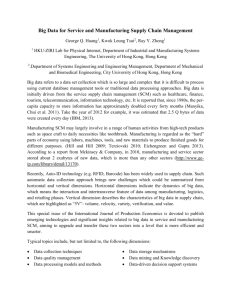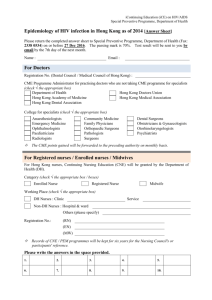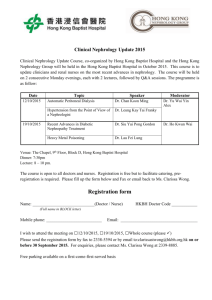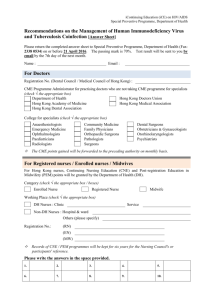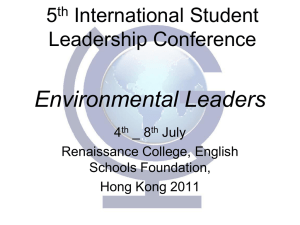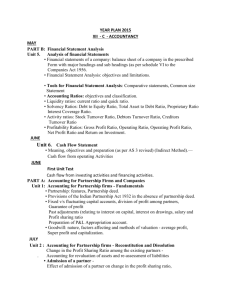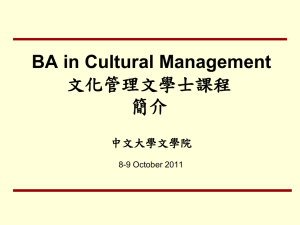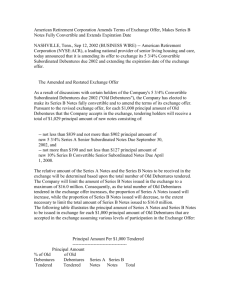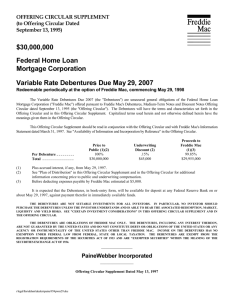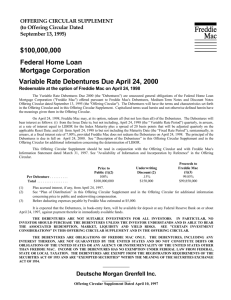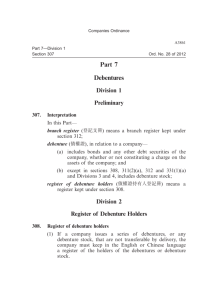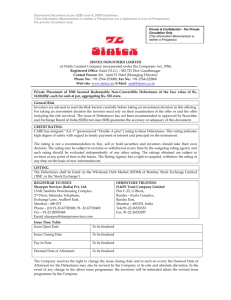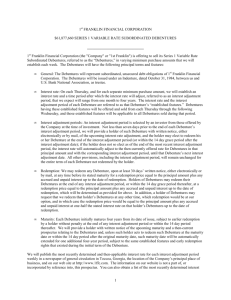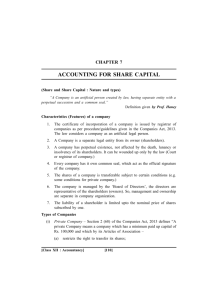Hong-Kong-for-Mobility - School Choice International
advertisement
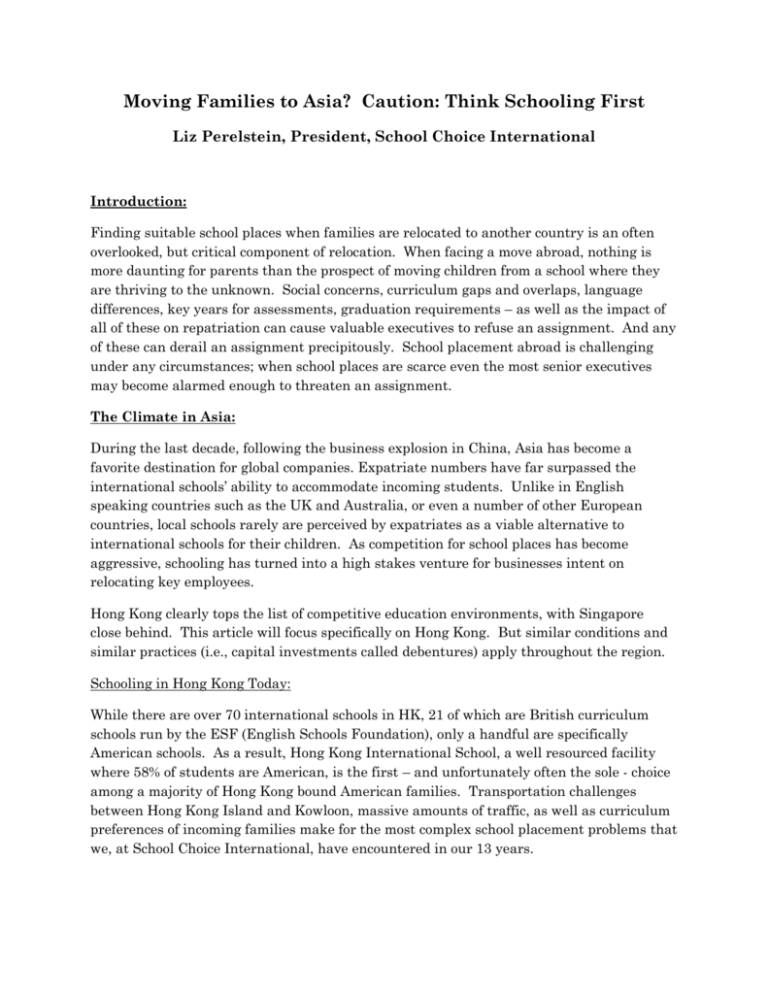
Moving Families to Asia? Caution: Think Schooling First Liz Perelstein, President, School Choice International Introduction: Finding suitable school places when families are relocated to another country is an often overlooked, but critical component of relocation. When facing a move abroad, nothing is more daunting for parents than the prospect of moving children from a school where they are thriving to the unknown. Social concerns, curriculum gaps and overlaps, language differences, key years for assessments, graduation requirements – as well as the impact of all of these on repatriation can cause valuable executives to refuse an assignment. And any of these can derail an assignment precipitously. School placement abroad is challenging under any circumstances; when school places are scarce even the most senior executives may become alarmed enough to threaten an assignment. The Climate in Asia: During the last decade, following the business explosion in China, Asia has become a favorite destination for global companies. Expatriate numbers have far surpassed the international schools’ ability to accommodate incoming students. Unlike in English speaking countries such as the UK and Australia, or even a number of other European countries, local schools rarely are perceived by expatriates as a viable alternative to international schools for their children. As competition for school places has become aggressive, schooling has turned into a high stakes venture for businesses intent on relocating key employees. Hong Kong clearly tops the list of competitive education environments, with Singapore close behind. This article will focus specifically on Hong Kong. But similar conditions and similar practices (i.e., capital investments called debentures) apply throughout the region. Schooling in Hong Kong Today: While there are over 70 international schools in HK, 21 of which are British curriculum schools run by the ESF (English Schools Foundation), only a handful are specifically American schools. As a result, Hong Kong International School, a well resourced facility where 58% of students are American, is the first – and unfortunately often the sole - choice among a majority of Hong Kong bound American families. Transportation challenges between Hong Kong Island and Kowloon, massive amounts of traffic, as well as curriculum preferences of incoming families make for the most complex school placement problems that we, at School Choice International, have encountered in our 13 years. That said, international schooling has been a problem for some time. As long ago as 2007,The Economist ran an article on space shortages: …slots in international schools have become precious. The economy is booming in China's tailwind, attracting well-paid expatriates. Prosperous local residents, meanwhile, are deserting local schools because of what is seen as deterioration in English-language teaching since the reversion to Chinese sovereignty in 1997. The Economist, June 14, 2007, “The $1 million Question: What is the Price of a Good Education?” Not long after this article was published, the recession brought excess capacity to Hong Kong’s International schools, but upwardly mobile local families aspiring to an American or international education for their children quickly filled the vacant seats. The explosion of Americans, coupled with local student enrollment in international schools has resulted in a shortage of spaces that has reached an extreme. Typically, international schools lose onethird of their students each year. Local students are not transient, so when foreign business picked up again in Hong Kong, most international schools were fully enrolled. Scarcity of school vacancies this year was exacerbated by the tornado and subsequent nuclear meltdown in Japan, as companies suddenly moved employees to an alternative office in Asia. Preferred Admissions Schemes: It is not new in Hong Kong, or in Asia in general, for international schools to rely on the use of debentures in their admissions practices. Debentures are non-interest-bearing bonds that provide capital for construction, infrastructure, or other costs. In return for this investment, debenture holders receive preferential treatment in admissions decisions. Although debenture schemes serve the same purpose, there is an absence of clarity and uniformity surrounding them. Selling school places to the highest bidder is uncomfortable, particularly in the education sector. Partly as a result of this awkwardness, the details surrounding their cost, the process or the impact on admissions may be elusive and specifics change frequently. There are separate programs for corporate and individual debentures, and each school runs its own debenture scheme. For the most part, a debenture is bought either by a company or by a family before a child is admitted to a school. Debentures: Companies purchase debentures to ensure that international schooling does not become an obstacle to an overseas transfer. At Hong Kong International School they are currently priced at HK $500,000, approximately $64,000 US per child. Debentures do not guarantee admission, but place the debenture holder’s assignee closer to the top of a lengthy waitlist. Students also must be “admissible” to the school, as determined by prior grades, testing and as well as subjective factors. Debentures also must be received 90 days prior to the start of the school year to be considered in the first round of admissions decisions. Once secured, debentures may be reallocated to another family either when they become due or when a student leaves the school. In some cases a debenture can be purchased from another company wishing to sell one, but in the current Hong Kong climate, this does not happen often. Schools, at will, can buy back debentures to reissue them at higher prices, and can change their relative weight in admissions decisions at any time. Some schools require companies to commit to several debentures. At the most popular schools in Hong Kong, waitlists to purchase debentures can be as long as 8-12 years. Nevertheless, there clearly are cases where waitlists are circumvented, although the conditions surrounding purchase of debentures that are technically unavailable are secretive. In addition, there is an active “secondary market” for debentures, facilitated by brokers. Debentures sold in this market range from $40,000 to $450,000 US per child – or even more. Although this is the most typical model, some schools have opted for mandatory debentures, which are not sold not in advance, but which are required when a child is offered a place. These debentures do not give a child admissions priority, but similarly raise funds for the school. In an atmosphere of excess demand, schools can set fees at their discretion. Individual Capital Financing Schemes: Individual debentures are costly for a family (one must be purchased for each child) but some schools raise money from families through other methods. An Annual Capital Levy is a different way financing capital expenditures that are tied to admission. The levy is less expensive at the outset but does become costly as the fee is assessed each year. Unlike a debenture, which technically may be resold to the school (at a price and conditions determined by the school at the time of sale), a capital levy may not be resold. Corporate Surety Scheme – ESF (English Schools Foundation) Schools: The English Schools Foundation’s 21 schools throughout Hong Kong are distributed as follows: 9 are primary schools, 5 are secondary schools, 2 are schools that cover all grade levels, 4 are kindergartens and they also run a school for children with special educational needs. All ESF schools follow the English National Curriculum. These schools also are faced with shortage of spaces, which they have addressed by instituting a Corporate Surety Scheme (CSS) in recognition of the educational needs of relocating families. The ESF schools allocate spaces to future students according to catchment area, so the Corporate Surety Scheme was designed to address the inevitable uncertainty about residential location during the transition period. The scheme works as follows: The CSS is essentially a “wait list” that opens each year in January and closes in June of the same year. The waiting list applies only to the upcoming academic year. The list is limited in number and operates alongside the regular ESF wait list. The company pays the monthly tuition fee during the waitlist period, as though the child were already enrolled in the school. For example, if the tuition fee is HK $6,000 (approximately) and a child is added to the list in January, the upfront cost of the CSS during the 6 month period is * $6,000 – or $36,000 HK. The Path Forward: To recapitulate, there are a fixed number of international schools in Hong Kong today, and of these, many of these offer the national curriculum of a particular country (Australia, Germany, Canada, etc.) when many families are seeking a more general international curriculum or an American style education. The more popular schools are almost impossible to access. Yet, for families more openminded about their children’s education, there are spaces to be found. Families need to make some sort of trade-off. It may be curriculum, it may be location, or it may be the convenience of educating multiple children within a particular school. But flexible families are inevitably the winners. Despite the obvious advantages in educating children abroad, worry and fear dominate parents during the school placement process. Parents need both education and reassurance to help them understand that education is far more than schooling. Today, when children will be graduating into an environment in which the skills they will need are unknown, where any specific content is instantly accessible on the internet, parents would be well served to reexamine the purpose of education. Living in an exciting Asian metropolis, exposure to and the opportunity to negotiate with children of diverse cultures, the chance to learn other languages, and the ability to operate in a world of uncertainty are far more important skills than any particular curriculum for today’s students. Companies that have addressed parental concerns with research and educational programs rather than succumbing to panic have been able to address their problems more effectively – and with far less stress. As the facts are difficult to change, it would serve HR well to work closely with education vendors in developing a proactive approach both in the short and long term. Businesses interested in operating in any Asian country must do their homework on schooling before any other planning - to ensure that key talent is willing to relocate. Education providers can assist in assessing family suitability based on educational factors. Long term educational planning can be addressed to “big picture” decisions, for example developing a strategy for purchasing debentures as well as for utilizing them most effectively to accommodate the greatest number- or most important - employees. Simultaneously, HR and education professionals must transmit a unified message to relocating employees. Expectations need to be managed, and creative solutions (for example, distance learning while awaiting seats) need to be explored. In Asia more than elsewhere, and in Hong Kong more than elsewhere in Asia, only by working as a team, HR professionals and education providers can make these transitions palatable.



